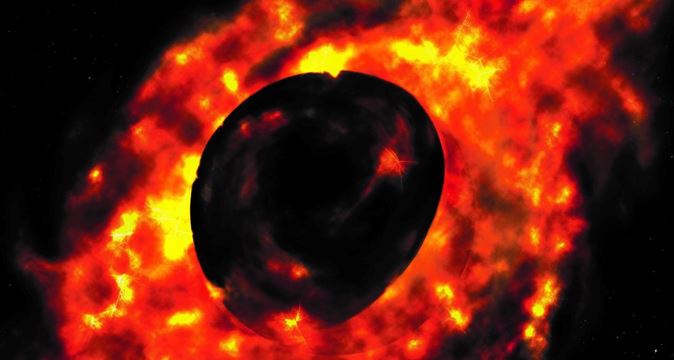Like Kronos, a monster black hole devours one sun every day. The fastest-growing black hole ever recorded, and 17 billion times more massive than Sol, our sun, it was discovered by researchers at the Australian National University (ANU).
Lead author Associate Professor Christian Wolf, an astronomer from ANU, does not think the record will ever be beaten.
“The incredible rate of growth also means a huge release of light and heat,” Associate Professor Wolf said. “So, this is also the most luminous known object in the universe. It’s 200 trillion times brighter than our sun.”
The intense radiation comes from the accretion disc around the black hole, which is the holding pattern for all the material waiting to be devoured.
“It looks like a gigantic and magnetic storm cell with temperatures of 10,000 degrees Celsius, lightning everywhere, and winds blowing so fast they would go around Earth in a second,” Associate Professor Wolf said.
“This storm cell is seven light years across, which is 50 per cent more than the distance from our solar system to the next star in the Galaxy, Alpha Centauri.”

“The light from this black hole has travelled over 12 billion years to reach us,” Professor Rachel Webster, an astrophysicist from the University of Melbourne, said.
“In the adolescent universe, matter was moving chaotically and feeding hungry black holes. Today, stars are moving orderly at safe distances and only rarely plunge into black holes.”
Co-author Dr Christopher Onken, also an astronomer at ANU, added: “It’s a surprise it remained undetected until now, given what we know about many other, less impressive black holes. It was hiding in plain sight.”
It was first detected using a 2.3 metre telescope at the ANU Siding Spring Observatory near Coonabarabran in New South Wales. The research team then turned to one of the largest telescopes in the world – the European Southern Observatory’s Very Large Telescope, in Chile – to confirm the full nature of the black hole and measure its mass.
“We were only able to make these discoveries because of the Australian Government’s 10-year partnership with the European Southern Observatory (ESO),” Associate Professor Wolf said.
The research was done in collaboration with the ESO, the University of Melbourne, and the Sorbonne Université in France.
The researchers’ findings are published in Nature Astronomy.



